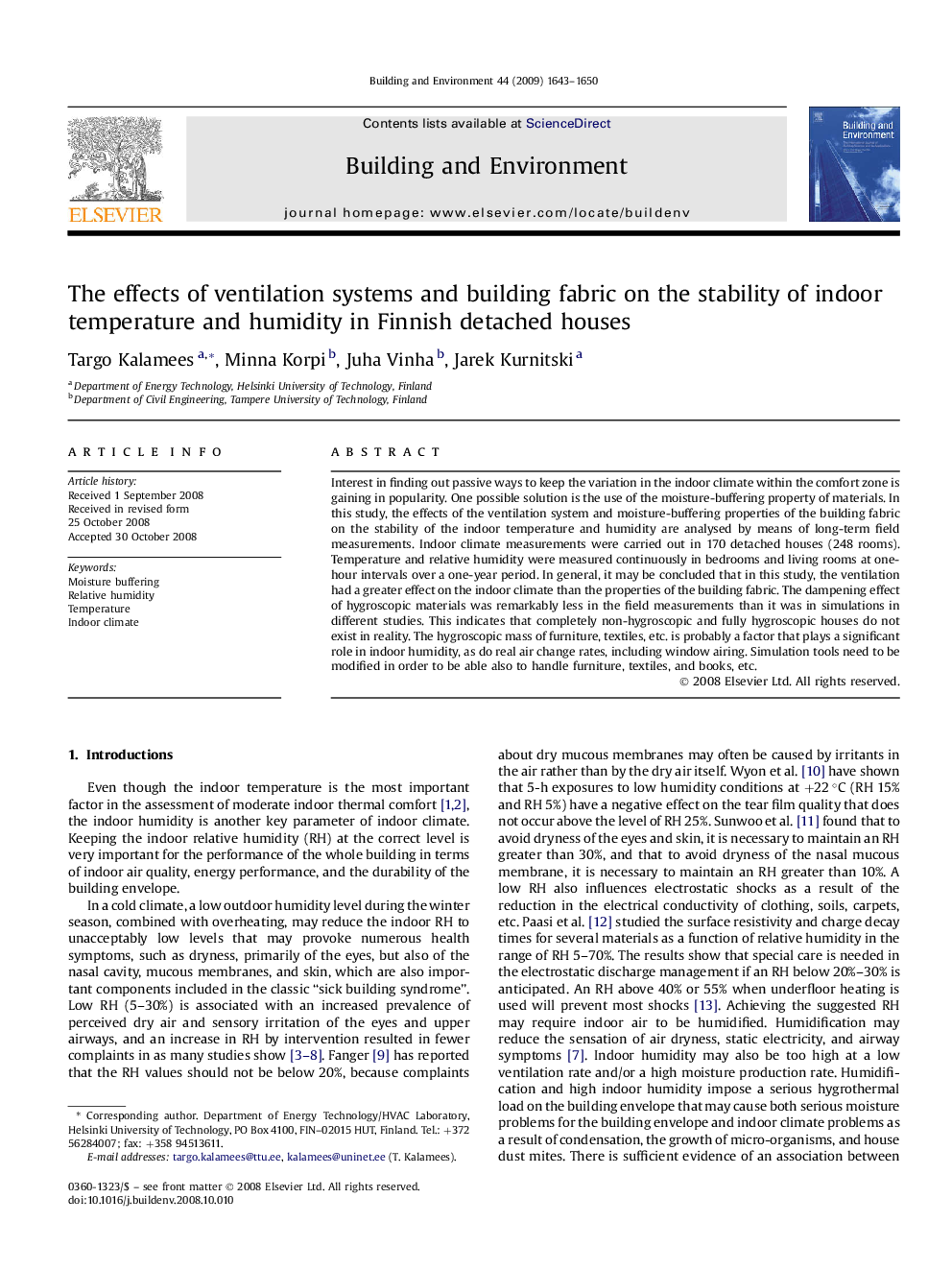| Article ID | Journal | Published Year | Pages | File Type |
|---|---|---|---|---|
| 249345 | Building and Environment | 2009 | 8 Pages |
Interest in finding out passive ways to keep the variation in the indoor climate within the comfort zone is gaining in popularity. One possible solution is the use of the moisture-buffering property of materials. In this study, the effects of the ventilation system and moisture-buffering properties of the building fabric on the stability of the indoor temperature and humidity are analysed by means of long-term field measurements. Indoor climate measurements were carried out in 170 detached houses (248 rooms). Temperature and relative humidity were measured continuously in bedrooms and living rooms at one-hour intervals over a one-year period. In general, it may be concluded that in this study, the ventilation had a greater effect on the indoor climate than the properties of the building fabric. The dampening effect of hygroscopic materials was remarkably less in the field measurements than it was in simulations in different studies. This indicates that completely non-hygroscopic and fully hygroscopic houses do not exist in reality. The hygroscopic mass of furniture, textiles, etc. is probably a factor that plays a significant role in indoor humidity, as do real air change rates, including window airing. Simulation tools need to be modified in order to be able also to handle furniture, textiles, and books, etc.
